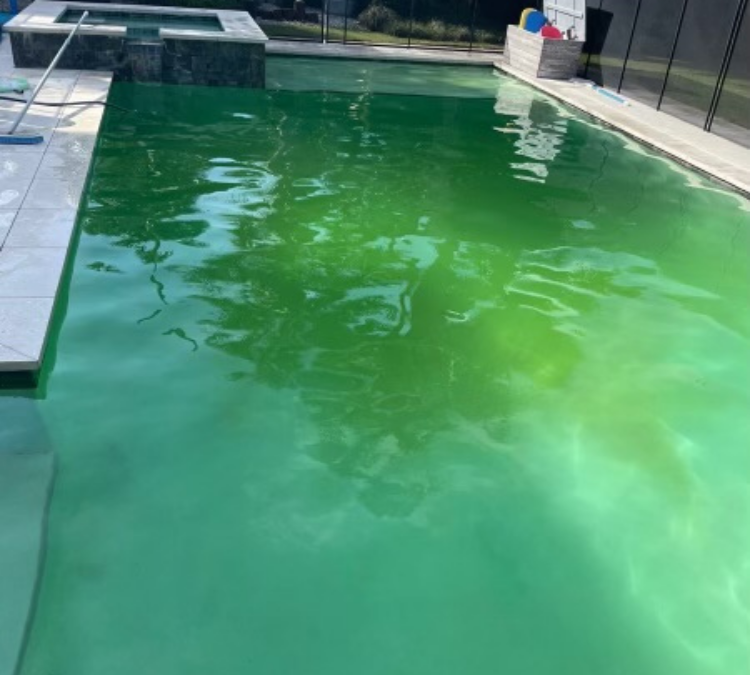Got Algae? Every Thing You (N)Ever Wanted to Know About Algae in Your Pool
If you have a pool, you know how quickly algae can form. This slippery plant-like substance can be challenging to remove and keep out of your pool water. Algae may pop up after the cold seasons when your pool sits unused, or even when you clean it daily.
But what is it? Why does it show up in your pool? And how the heck do you get rid of it?
What is Algae?
Where it is warm and wet, algae will thrive. Algae are single-cell or multicellular organisms that live through photosynthesis. In sun, heat, and water, algae flourish. Algae typically grows in bodies of water such as rivers, lakes, ponds, the ocean, and yes, your pool.
Different Types of Algae
There are thousands of species of algae that grow around the world. Fortunately, you do not need to worry about all of them. Four primary algae types often grow in pools.
Green Algae
One of the most common types of algae is green algae. As its name suggests, green algae is often a shade of green, although it can also be yellowy-green or blue-green. Green algae grow well in still, undisturbed water. It is most likely to pop up after winter or during any other time that your pool is in disuse.
Mustard Algae
Yellow or mustard algae is a little harder to spot than green algae. It ranges from a yellow-green to brown color and may resemble dirt at first glance. However, its slimy surface gives it away. Mustard algae can pop up even in well-cared-for pools. It grows when chlorine levels get too low.
Pink Algae
While not a true algae, pink algae is similar to actual algae. Pink algae is an orange or red-tinted growth of bacteria that typically spreads along the waterline of a pool. Pink algae are especially attracted to PVC plastics and may coat all surfaces of PVC materials.
Black Algae
As the most stubborn form of pool algae, black algae is more resilient than other types. Despite its name, black algae are generally bluish-green. Like pink algae, black algae is a bacterial growth rather than true algae. Black algae stick well to tile and concrete and do not come off with ease.
Why Is Algae in My Pool?
So why do algae grow in pools at all? While still water is a contributing factor, even a well-used and maintained pool can become the host of an algae bloom. When nutrients in the water are unbalanced, algae thrive. Do you have water? Do you have sunshine? Do you have warm weather? Then yes, you’ll have algae.
How Do I Get Algae OUT of My Pool?
Clearing algae is a wise idea, as scummy water is both unattractive and not always safe to swim in.
Pool floats can accumulate algae growth if they sit in the water for too long, so removing any inflatables whenever the pool is not in use is a good idea. When you need to get rid of algae clinging to the inside of your pool, there are a few ways to accomplish this.
Green algae are the easiest to deal with, as cleaning your pool regularly, maintaining the filter system, and balancing the water with chlorine will kill mild algae. Stubborn algae such as mustard, pink, and black algae may need more rigorous cleaning, water pH rebalancing, and an algaecide to nuke any remaining algae growth.
Watch out for discoloration or slimy texture in your pool. This will help you identify algae early to eliminate it as soon as possible.
You will likely deal with algae bloom at some point if you have not already. Even if you clean your pool daily, there is still a chance that stubborn algae growth will start.
Keeping your pool clean, running the pump daily, and shocking it with chlorine after a period of disuse will prevent or kill any algae blooms.

